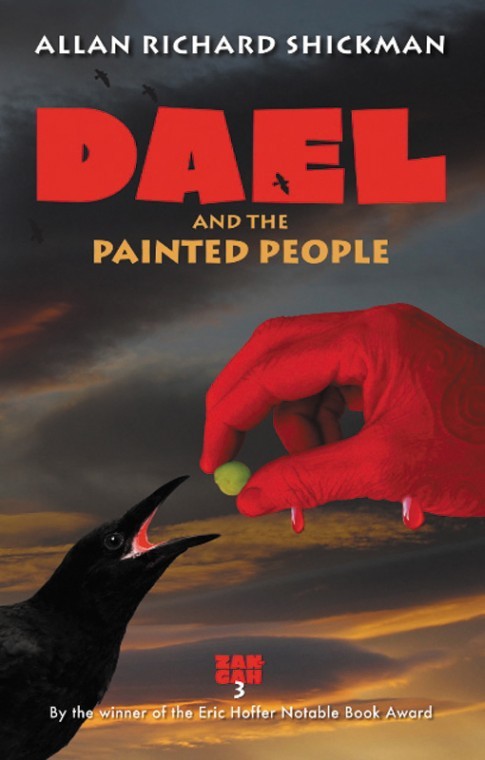Shickman scores a ‘Triple’ in ‘Zan Gah’ book series
Published August 10, 2011
St. Louis Jewish author Allan Richard Shickman has published a vivid third installment in his critically acclaimed “Zan Gah” series, with the release of “Dael and the Painted People: Zan Gah 3” (Earthshaker Books, $9.95, paper). Shickman’s first two books in this lively series, “Zan-Gah: A Prehistoric Adventure” and “Zan-Gah and the Beautiful Country” have been hailed by critics of the fantasy and related genres, along with teachers, librarians and young readers.
Shickman’s books, described as “harrowing adventures set in prehistoric times,” have resulted in his receiving several prestigious awards, including the Eric Hoffer Notable Book Award, the Mom’s Choice Gold Seal for Excellence and ForeWord Magazine’s Book of the Year Finalist Award.
Written in a fast-paced, yet thoughtful style, Shickman invites readers of all ages into the prehistoric world of his protagonist Zan-Gah. New readers are advised to peruse the first two installments to familiarize themselves with the setting.
In “Zan- Gah: A Prehistoric Adventure,” we follow the development of the hero from his early teens to maturity and manhood. The second insallment, “Zan-Gah and the Beautiful Country,” zeroes in on Zan’s disturbed and bitter twin brother, Dael, and on Zan’s efforts “to protect him from his own worst impulses.” At the end of the second book, Dael had been unable to find peace and happiness even in the almost paradise of the Beautiful Country. He leaves with the mute girl, Sparrow, in search of peace and some kind of resolution to his life.
Schickman’s books are not explicitly “Jewish” in subject matter, but the characters and their challenges have much in common with the stories in the Bible, especially those involving contending siblings. Think of Ishmael and Isaac. Ishmael was the son of Abraham and the Egyptian maid Hagar born when Abraham’s wife Sarah was “barren.” When Sarah gave birth to Isaac, this biblical “blended family” did not work out, so Hagar and Ishmael were banished from Abraham’s tents. Isaac went on to continue as the Second Patriarch, while Ishmael became the accepted ancestor of the Arab peoples of the region. The two brothers came together to bury their father Abraham.
Zan and Dael also have much in common with the biblical set of twins, Jacob and Esau. Jacob, the smooth-skinned, reflective lad liked to stay home with his mother, while Esau, the hairy hunter, considered himself their father Isaac’s favorite. When Jacob outwits Esau into selling his birthright not once but twice, Esau’s bitterness takes on epic proportions. The twin brothers struggle for years to find a peaceful way to reconcile. Also similar to the struggles of Dael and Zan-Gah are Cain and Abel, the story of the first murder, brother killing brother in the Garden of Eden.
In “Dael and the Painted People,” we find Dael “tormented by grief and guilt” and fighting to restrain his violence (and the potential for fratricide), going off to live with the Painted People. In a story filled with powerful and colorful symbols, Dael attains much of the serenity that had eluded him in his past. In the land of the Painted People, he “finds another kind of paradise-one of generosity and kindness.” Having grown used to living in bitterness he finds it difficult to attain complete serenity but begins to slowly heal.
The reader also observes Sparrow as she “blooms in an unexpected way” while Dael himself makes a new and dangerous enemy without realizing he has done so. Dael, in his new environment and facing new challenges, finds new allies to help him in his quest, including a troop of crows, which will remind some readers of the friendly crows who helped Dumbo adjust to his new life.
Shickman has created a “Brave Old World,” which is as believable as any of the fantasy worlds in other classics about Oz, the Hobbits and of course the world of Harry Potter. Zan-Gah’s and Dael’s prehistoric world is not a cartoonish version like “The Flintsones” or the old “Alley Oop” comic strip.
The book would be a natural candidate for a realistic graphic novel by an artist with the skills of the late Will Eisner, or perhaps R. Crumb, whose graphic novelization of the Book of Genesis is terrific. Then, who knows? Perhaps Hollywood will discover the genius of Allan Richard Shickman. Can it be that there’s a Jewish J. K. Rowling in our midst?















